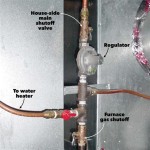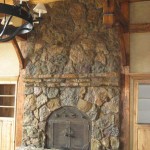Installing New Fireplace Doors: A Comprehensive Guide
Replacing or installing new fireplace doors can enhance the aesthetic appeal of a living space, improve home safety, and increase energy efficiency. This article provides a comprehensive guide to the process, covering aspects from measuring the fireplace opening to the final installation steps. It aims to equip homeowners with the knowledge necessary to successfully complete this project, or to effectively communicate with a professional installer.
Before embarking on this project, careful consideration should be given to safety precautions and adherence to local building codes. Ensuring proper ventilation and understanding the specific requirements for the fireplace type are crucial for a safe and efficient installation.
Key Point 1: Measurement and Door Selection
Accurate measurement is the first and arguably most important step in selecting and installing new fireplace doors. Incorrect measurements will lead to the acquisition of doors that are either too large or too small, rendering them unusable. The three primary dimensions to consider are the width, height, and depth of the fireplace opening.
Width Measurement: The width should be measured at the widest point of the fireplace opening. Use a metal measuring tape for accuracy. It is recommended to measure both the top and bottom widths of the opening. If there is any variation, use the wider measurement as the determining factor. For arched or irregular openings, careful attention to the widest point is critical.
Height Measurement: Similarly, the height should be measured at the tallest point of the opening. Measure from the floor of the firebox to the top of the opening. Again, measure both left and right sides, and use the larger of the two measurements. If the firebox floor is uneven, consider using a level to establish a horizontal reference point before measuring the height.
Depth Measurement: The depth of the fireplace opening, also known as the “firebox recess,” is the distance from the front of the fireplace opening to the back wall of the firebox. This measurement is important for ensuring that the fireplace doors will fit flush against the fireplace surround or the front of the firebox. Some fireplace doors have adjustable depths to accommodate minor variations.
Once the accurate measurements have been obtained, the selection process can begin. Fireplace doors come in various styles, materials, and finishes. Consider the existing décor of the room and the overall aesthetic desired. Common materials include steel, aluminum, and glass. Finishes range from black and brass to brushed nickel and antique styles. Choosing a door that complements the existing fireplace surround and the room's design is important.
Furthermore, understanding the different types of fireplace doors is crucial. Overlap doors install over the face of the fireplace opening and require a clean, flat surface for mounting. Inside fit doors install inside the fireplace opening and are often used for masonry fireplaces. Track doors slide open and closed on a track system. Each type has its own installation requirements and aesthetic considerations.
When ordering the doors, it is paramount to double-check all measurements and specifications with the supplier to avoid errors. Review the manufacturer's instructions carefully before proceeding with the installation.
Key Point 2: Preparatory Steps and Tools
Before the actual installation begins, it is essential to gather all necessary tools and prepare the fireplace opening. This will ensure a smooth and efficient installation process. The required tools typically include:
Measuring Tape: As already mentioned, accurate measurement is crucial.
Level: Used to ensure the doors are installed straight and plumb.
Drill: For drilling pilot holes and installing screws.
Screwdriver Set: For tightening screws and fasteners.
Safety Glasses: To protect the eyes from debris.
Work Gloves: To protect the hands from sharp edges and splinters.
Masonry Drill Bits: If the fireplace is made of brick or stone, masonry drill bits will be needed to drill pilot holes.
Hammer: For tapping in anchors or fasteners.
Vacuum Cleaner: For cleaning up debris and dust.
Caulk Gun with Heat-Resistant Caulk: For sealing any gaps between the fireplace doors and the fireplace opening.
Once the tools are assembled, prepare the fireplace opening by thoroughly cleaning it. Remove any loose debris, soot, or old caulk. A wire brush can be helpful for removing stubborn residue. Vacuum the inside of the firebox to remove any remaining dust and debris. This step is important for ensuring a clean and secure installation.
Inspect the fireplace opening for any cracks or damage. If cracks are present, repair them before installing the new doors. Use a high-temperature mortar or patching compound specifically designed for fireplace repairs. Allow the patch to cure completely before proceeding with the installation. Failure to address cracks can compromise the structural integrity of the fireplace and potentially lead to safety hazards.
If the existing fireplace doors are being replaced, carefully remove them. Disconnect any hardware or fasteners that are holding the doors in place. Be careful not to damage the surrounding fireplace surround or the firebox during the removal process. Dispose of the old doors properly.
Key Point 3: Installation Procedure
With the measurements taken, tools gathered, and the fireplace opening prepared, the actual installation of the new fireplace doors can begin. The specific installation procedure will vary depending on the type of doors being installed and the manufacturer's instructions. However, the following general steps apply to most installations:
Positioning the Doors: Carefully position the fireplace doors in the opening. Ensure that they are centered and aligned properly. Use a level to check that the doors are plumb and level. If the doors are not level, use shims to adjust their position. Shims are thin pieces of wood or plastic that can be inserted between the doors and the fireplace opening to create a level surface.
Marking Pilot Holes: Once the doors are properly positioned, mark the locations for the pilot holes. Most fireplace doors have pre-drilled holes or brackets for mounting. Use a pencil or marker to mark the locations of these holes on the fireplace surround or the firebox. Ensure that the marks are accurate and aligned with the holes in the doors.
Drilling Pilot Holes: Using a drill with the appropriate drill bit (masonry drill bit for brick or stone fireplaces), drill pilot holes at the marked locations. The pilot holes should be slightly smaller than the screws or anchors that will be used to secure the doors. This will help prevent the screws from stripping or damaging the surrounding material. When drilling into masonry, use a slow and steady speed to avoid cracking or chipping the brick or stone.
Securing the Doors: Insert the screws or anchors into the pilot holes and tighten them to secure the doors in place. Do not overtighten the screws, as this can damage the doors or the fireplace surround. Use a screwdriver or drill with a low torque setting to avoid stripping the screws. Ensure that the doors are securely attached to the fireplace opening and that they do not wobble or move.
Sealing Gaps: After the doors are secured, inspect for any gaps between the doors and the fireplace opening. Use a caulk gun with heat-resistant caulk to seal any gaps. Apply a bead of caulk along the edges of the doors where they meet the fireplace surround or the firebox. Smooth the caulk with a finger or a damp cloth to create a clean and professional finish. The caulk will help prevent air leakage and improve the energy efficiency of the fireplace.
Final Adjustments: Once the installation is complete, make any final adjustments to the doors. Check that they open and close smoothly and that the latches or handles operate properly. Clean the glass with a glass cleaner specifically designed for fireplaces. Remove any fingerprints or smudges. Inspect the installation for any potential safety hazards and address them immediately.
By following these steps, homeowners can successfully install new fireplace doors and enhance the beauty, safety, and efficiency of their fireplaces. If any difficulties are encountered, it is always advisable to consult with a qualified professional.

How To Install Fireplace Doors Pleasant Hearth

How Do I Install A Fireplace Door On My Own

Diy Fireplace Door Installation Pleasant Hearth

Installation Pleasant Hearth Fireplace Glass Door

Diy Fireplace Door Installation Pleasant Hearth

Fireplace Glass Doors Vs Screens Full Service Chimney

Fireplace Door Installation Chimney Sweeps Repairs And Installations

Fireplace Doors And Chimney Authority

Fireplace Door Update With Spray Paint Roots Wings Furniture Llc

How To Easily Install Fireplace Doors








